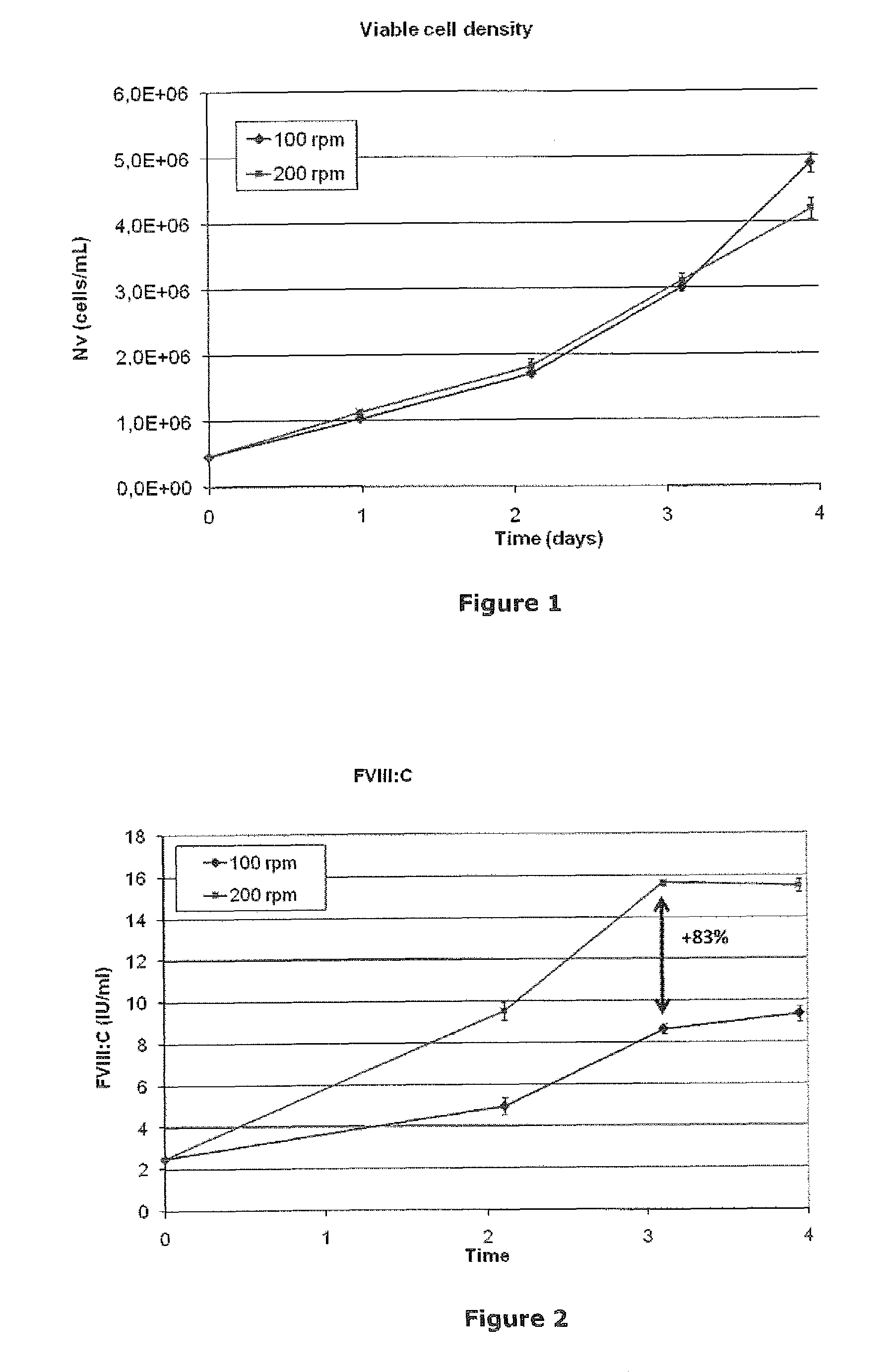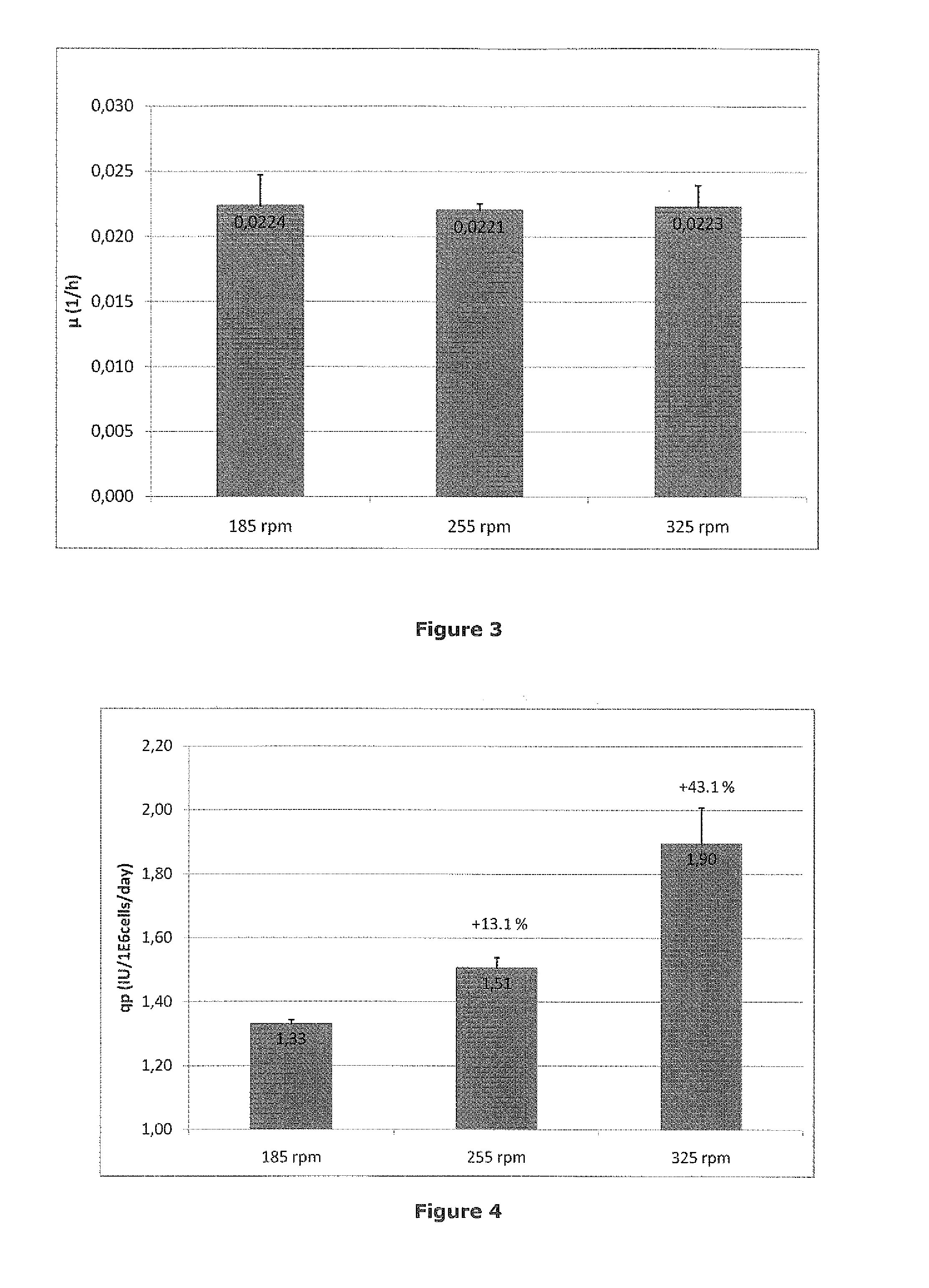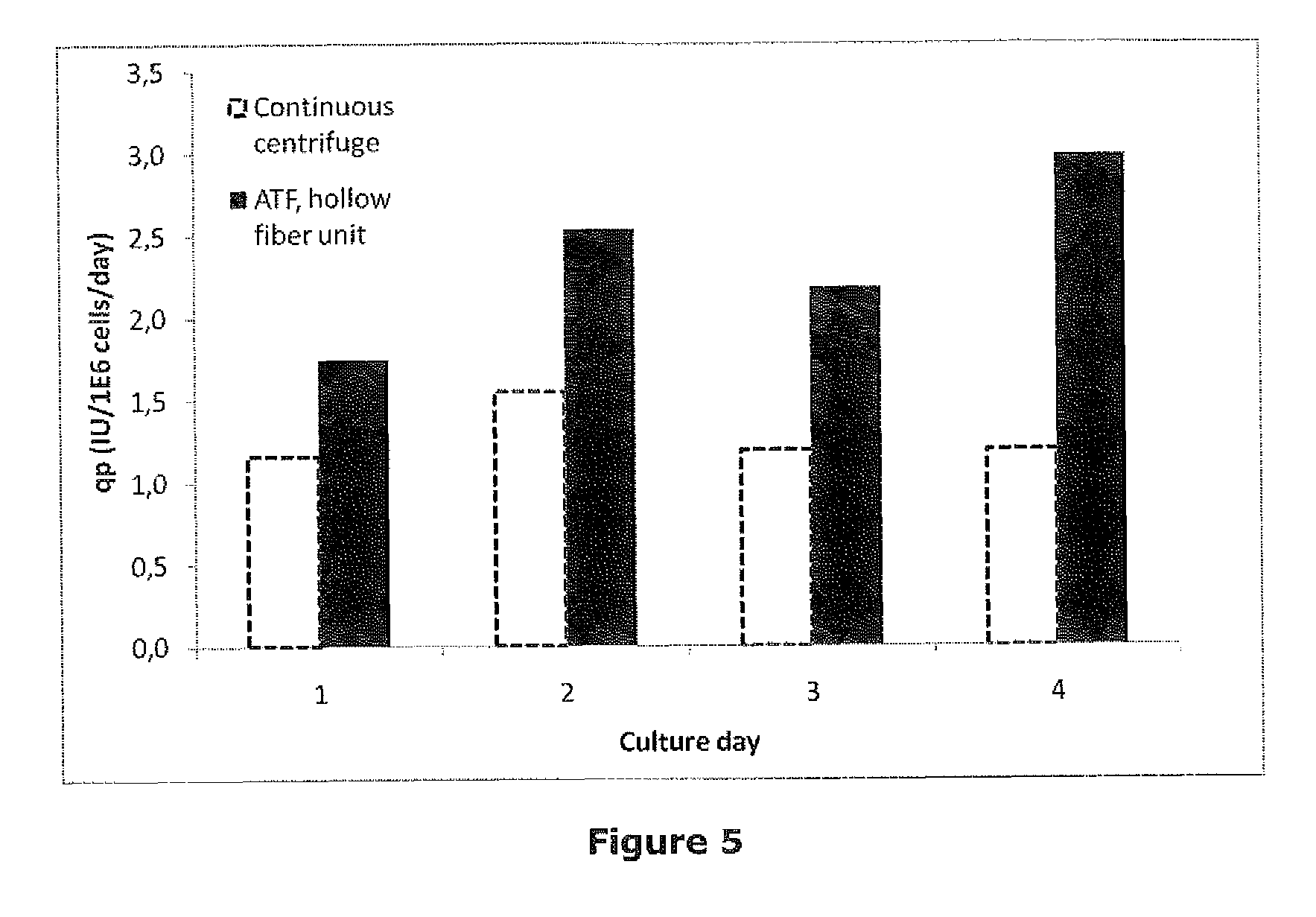Method of increasing the productivity of eucaryotic cells in the production of recombinant FVIII
a technology of eucaryotic cells and recombinant fviii, which is applied in the field of increasing the productivity of eucaryotic cells in the production of recombinant fviii, mammalian cells, etc., can solve the problems of increasing demand, reducing capacity, and difficult culture medium
- Summary
- Abstract
- Description
- Claims
- Application Information
AI Technical Summary
Benefits of technology
Problems solved by technology
Method used
Image
Examples
example 1
[0043]Exponentially growing HEK293F cells producing BDDrFVIII were centrifuged and thereafter the cell pellet was resuspended in serum free cell culture medium to a viable cell density of 0.5×106 cells / mL. Cells were thereafter cultivated in 125 mL baffled Erlenmeyer bottles at 100 rpm or 200 rpm in shaker incubators in a 5% / 95% CO2 / air overlay at 37° C. Cell density was measured in all cultures each day by the trypan blue exclusion method with the automatic Cedex (Innovatis) cell counter. Accumulated FVIII was released from the cells by increasing the ionic concentration in the cell suspension to 1 M NaCl+30 mM CaCl2. The cells were removed by centrifugation and FVIII was determined by the Chromogenic substrate method (Coatest® SP FVIII). Growth profiles were similar (FIG. 1) while the high stirring cultures showed 83% higher accumulated FVIII:C concentration after 3 days of batch culture (FIG. 2).
example 2
[0044]HEK293F cells producing BDDrFVIII were cultivated in parallel in batch mode at different stirring rates in an equipment with six 0.4 L bioreactors (Multifors, Infors). The aim was to examine how stirring rate affects productivity in a controlled environment where the other cell culture parameters are kept constant. To be able to examine high stirring rates (>300 rpm) the bioreactor electric stirrer motors, normally used for cell culture applications, were exchanged to more powerful stirrer motors, normally used for bacterial culture applications, which could run up to 1200 rpm. Dissolved oxygen tension (DOT) set-point was set to 90% and regulated with air addition from a sparger stone in the cell suspension. Viable cell density, viability and aggregate rate were measured by Cedex (Innovatis) cell counter. Accumulated FVIII was released from the cells by increasing the ionic concentration in the cell suspension to 1 M NaCl+30 mM CaCl2. The cells were removed by centrifugation a...
example 3
[0046]HEK293F cells producing BDDrFVIII were cultivated in a continuous steady-state perfusion culture in a 2 L stirred tank bioreactor. The bioreactor uses a 90 mm pitched blade impeller to achieve stirring. Medium exchange was achieved by using a hollow fiber filter which also create shear to the cell suspension. All cell culture parameters except for the stirring rate were kept constant during the experiment. Viable cell density, viability and aggregate rate were measured by Cedex (Innovatis) cell counter. Accumulated FVIII was released from the cells by increasing the ionic concentration in the cell suspension to 1 M NaCl+30 mM CaCl2. The cells were removed by centrifugation and FVIII was determined by the Chromogenic substrate method (Coatest® SP FVIII). The examined stirring rates were 185; 255 and 325 rpm which adds 113, 210 and 610 W / m3 of power to the culture, respectively. Stirring rate did not affect the cell specific growth rate (FIG. 3). However, increased stirring rate...
PUM
| Property | Measurement | Unit |
|---|---|---|
| power density | aaaaa | aaaaa |
| mechanical shear stress | aaaaa | aaaaa |
| power density | aaaaa | aaaaa |
Abstract
Description
Claims
Application Information
 Login to View More
Login to View More - R&D
- Intellectual Property
- Life Sciences
- Materials
- Tech Scout
- Unparalleled Data Quality
- Higher Quality Content
- 60% Fewer Hallucinations
Browse by: Latest US Patents, China's latest patents, Technical Efficacy Thesaurus, Application Domain, Technology Topic, Popular Technical Reports.
© 2025 PatSnap. All rights reserved.Legal|Privacy policy|Modern Slavery Act Transparency Statement|Sitemap|About US| Contact US: help@patsnap.com



